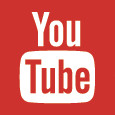Nevada Library Association Handbook
Board of Trustees
Nevada Library Association Convention Handbook
I. GENERAL
A. The Convention Handbook is NLA's officially accepted guide for planning an annual meeting. The annual meeting chairperson is not required to follow it explicitly, but is advised to study its contents to get an overview of all areas to be covered.
B. A good conference has these characteristics:
- It is a work conference. The members do not come to be talked at, but to talk, to think, and to help arrive at decisions and policies.
- It has as its purpose, planned group action and true changes in attitudes.
- It deals with "problems," not abstract topics or themes.
- It is concerned with the problems of the members, not just the leaders.
- It has a definite action objective and moves steadily toward it.
- It provides time for outside activities. The program is not too tight or too full of business.
- It evaluates itself and the progress being made.
- It spends little time on: (a) speeches of welcome, (b) introductions of people everyone knows or else does not care to know, (c) formal "papers," (d) speeches of any kind unless the speaker has something to say on the problems under consideration.
- It utilizes the latent leadership of its members and trains its own leaders. It utilizes its members as team discussion leaders, recorders, observers, and as fact-givers or consultants, etc.
- The conference can provide a variety of meetings and group activities. It can be divided into small groups which work on parts of the conference problem or theme.
II. PLANNING THE CONVENTION
A. At least four main committees are needed to assist the annual meeting chairperson in planning the convention. They are: program chairperson, exhibits chairperson, publicity chairperson, and local arrangement chairperson. The latter also has subcommittees for registration and special events.
B. The general theme should be goal-oriented and may naturally evolve from the selected project chosen by the president, past president, and the president-elect as a worthwhile "accomplishment for the Association" during a given year. The theme is decided upon from a year to nine months in advance.
C. All members of the convention committee should, if possible, be called together for a preliminary meeting about ten months in advance for a briefing on their functions and responsibilities.
D. Use a check sheet to systematize your planning and to ensure attention to important details.
E. Allow time for every scheduled activity. Make provisions for all intermissions, coffee breaks, and discussions. Don't over fill the program. Allow time for visiting exhibits and for unexpected events.
F. Have a few good speakers. In a work conference not many speakers are needed or should be used. Those who are used should be those who have something to say which will bear on the theme of the convention, and if possible, be able to say it well. Eliminate or cut to the bone traditional opening speeches of welcome by mayors, et al.; confine opening session preliminaries to telegraph greetings, etc., announcements, and other necessary business matters pertaining to NLA business as required by the NLA Constitution.
III. LEGAL FRAMEWORK OF THE CONVENTION
A. The Annual Meeting Committee is a standing committee rather than a special committee, as its function is a continuing one.
B. Duties of the President.
- The annual meeting chairperson is appointed by the new president at the last session of the executive board at the annual meeting. The chairperson should be a resident of the community in which the next annual meeting will be held.
- Convention-site invitations are received by the president during the second general session of the convention, two to three years in advance. The time and location of next year's convention is discussed at the executive board meeting prior to the convention, so that an announcement can be made to the membership during the last session of the annual meeting. Efforts should be made to rotate the site of the convention to the various areas of the state.
- In January, the time and place of the annual meeting is decided. The publicity chairperson notifies ALA, American Libraries, Library Journal, MPLA Newsletter, CLA Newsletter, Nevada Libraries, and Nevada State Library and Archives.
- President clears dates for the next convention with surrounding states to make it possible for exhibitors to attend the Nevada meeting.
- President should stay informed on convention arrangements, and should work as closely as possible with annual meeting chairperson. In July, the President composes a letter to the membership inviting them to the convention and also composes a special letter or letters inviting special friends of NLA, and other VIP's. The President arranges with the executive secretary for a pre-convention and final board meeting. Matters to be discussed at convention should be on the agenda.
- After convention, writes letters of thanks to all who contributed to the convention.
IV. ANNUAL MEETING CHAIR: DUTIES AND RESPONSIBILITIES
A. The annual meeting chairperson is appointed by the president at the last session of the executive board at the annual meeting. The chairperson should be a resident of the community in which the next annual meeting is to be held.
B. The chairperson coordinates all convention preparations as outlined in the convention handbook, and coordinates all convention expenditures with anticipated convention expenses, sending all receipts and bills to the treasurer. The chairperson is guided by the suggestions and procedures in the convention handbook.
C. The chairperson is responsible to the president and with the president, prepares two convention letters, usually pointing out program highlights and inviting members and others to the convention. Both the president's letter and the convention chair's letter are published in the convention issue of Nevada Libraries, which also includes registration and membership forms, the preliminary program, etc. If there is to be no convention issue, a packet containing the following is mailed to every member and to other interested persons for receipt approximately six weeks before the convention:
President's invitational letter
Tentative program
Form for preregistration, meals, special events
Form for membership application or renewal
Information about hotel accommodations
Transportation
D. Chair selects necessary committees and chairperson who should be appointed by December before the midwinter meeting of the executive board. Chair should attend the midwinter meeting where discussion of plans and preliminary reports can be made along with a budget request. Fees for registration and exhibitors should be set by the executive board during the midwinter meeting.
E. Chair receives from the previous chairperson all pertinent information regarding past conventions. Chair then distributes to each committee chairperson portions of the handbook covering their responsibilities. After the convention, the material is returned to the president along with any recommendations for revision of the handbook.
F. Chair selects samples of official programs, photographs, and pertinent correspondence regarding the convention and forwards same to archivist by December following the convention.
V. COMMITTEES
A. Program chair.
- Plans the convention program, working closely with the convention chair, the president, and the local arrangements chair. Sections and interest groups plan their own programs, obtain speakers, and determine their financial obligations. Time on the program, meeting rooms, special equipment, and meals are submitted to the program chairperson, who in turn coordinates the requests with the local arrangements chairperson.
- Theme of the convention is normally determined by the president. The program chairperson works with constituent group and committee program chairperson to ensure continuity of the theme throughout the program.
- Corresponds, in writing, with each guest speaker, outlining costs that NLA agrees to pay. This is done well in advance and is part of the acceptance by the speaker. The number of nights in a hotel, a per diem rate for meals, room service, any transportation charges, and honorarium fees should all be outlined in each letter. Prepares anticipated budget for convention chair, turning over bills and receipts to Annual Meeting Chair. The program chairperson works closely with the publicity chairperson to receive and share photos, biographies, and program descriptions so that both the program and the Nevada Libraries convention issue can be developed jointly without duplication of effort.
- Arranges for printing of convention program. Programs should include advertising to defray costs. The final program is to be received from the printer no later than two weeks before the convention. The publicity chairperson and the exhibits chairperson work closely with the program chairperson to contact potential advertisers, set cost for advertisements and receipt and return of copy to be used in the program. (The major cost of the program over the years has often been paid by Baker & Taylor or other vendors.)
- In-state library staff members
can not collect travel, honorarium and per diem for presentations at NLA
Annual Conference with the exception that if their institution doesn't
pay travel and per diem, they may request those costs at state rates.
B. Local arrangements chair.
- Assumes control of local arrangements; responsible to the convention chair.
- Should be a resident of the community in which the meeting takes place. Should be someone with time to handle details, and with knowledge of local people and conditions.
- Clears convention dates with local Chamber of Commerce, convention centers, hotels, etc. Selects best headquarters location available, all meeting places, banquet facilities, etc. The site location is usually confirmed early in the spring by the exhibits and/or program chairperson during an on site visit.
- Usually names other local people to carry out registration, meals, and special events. (Chair may name a registration chair). All of these activities are to be coordinated by the local arrangements chairperson and makes final decisions with the annual convention chair.
- Confers with program chairperson to determine meeting room needs, size of groups, committees, section meetings, etc. Works closely with convention-center personnel to assure proper room set-ups. If no help is available, assigns this responsibility to local people or hires someone to help. The meeting room for the general session must be large enough to seat 150 to 200 people. Public address-equipment, tables, chairs, lectern, podium, flags, flowers, and a-v equipment needs are resolved by the local arrangements chair.
- Arranges for registration table, including space for: registration chairperson and committee, treasurer's table (for membership dues payments), and special-events chairperson, if needed. Arranges for equipment needed: typewriters, pens, receipts, change box, telephone, signs, bulletin board messages, copy machine, etc.
- Arranges for meals, room reservations for special guests, tours, floral-table arrangements, corsages, table decorations, place cards. Works closely with program chairperson on meals and special events, as exact price of each ticket must be printed on the pre-registration form, which also should indicate any limitations on number of tickets to be sold for a given function. The form also should indicate to whom a check should be made and to whom the form should be sent.
- Acquires tickets for each meal. Tickets should be well marked or color-keyed. Some should be reserved for sale at registration. Price of each meal should include tax and tip, plus enough to cover cost of tickets for selected guests.
- Arranges for any special tours
of interest in or near the convention city, local libraries, points of
interest, special events, etc. Arranges transportation, if needed.
C. Registration committee.
- Registration chairperson is named by the local arrangements chair, or by the convention chair. Is responsible to the local-arrangements chair.
- At least three people are needed at the registration desk: one to hand out pre-registered name tags, packets, and meal tickets; one to register those not pre-registered; and one to sell tickets for special events. (The treasurer or his designate also sits at the registration desk to collect NLA dues.) These three people are named by and are responsible to the registration chair.
- Collects materials for packets (Chamber of Commerce handouts, souvenir pens, writing pads, program materials, maps, list of restaurants, etc.)
- The convention chairperson usually asks an exhibitor to donate containers (vinyl zipper envelopes, bags, or folders) in which to group each registrants' packet material; 225 to 250 such envelopes would be sufficient.
- Secures identification badges for registered members and speakers, preparing in advance badges for pre-registered attendees. Some convention centers and local chambers of commerce supply badges gratis.
- Registers each attendee, either in advance or at convention, and collects fees.
- Solves other logistical
problems that occur, if appropriate and if possible. Courtesy extended
at this desk helps set the tone of the entire convention.
D. Exhibits chair.
- Exhibits chairperson names one person to assist the exhibits chair, understudying the job. The following year that person should serve as exhibits chair.
- Obtains from previous exhibits chairperson previous exhibitors' file and their addresses. May add others to the list to receive invitations to exhibit.
- Confers with convention chairperson to suggest exhibitors' fee. Convention chairperson will present suggested fee schedule to the executive board at midwinter meeting.
- If a visit to the convention site is not possible, works from room sizes obtained by the local arrangements chair. Prepares floor plan of available exhibit space, indicating maximum number of booths.
- Writes to prospective exhibitors in very early spring. Includes information as to size of booths available, fee, location and time of convention, theme, etc. Accepts reservations, plans and designs table space for exhibitors. Obtains from local arrangements chairperson information on hotel accommodations, and flyers on points of interest in the area. Sends postal reminder to each exhibitor two weeks before convention.
- Exhibitors will want to know: where and when shipments of materials can be sent; time exhibits can be erected and dismantled; if space will have backdrop for displays and placards; if signs will be provided by NLA; location of electrical outlets; exact size of booths or tables; if fee covers a guard for exhibit area; if fee is different for unmanned booths; how and where fees are to be paid; and deadline for doing so.
- Sends a list of exhibitors to president and convention chair. For inclusion in the official program, also sends a list to the program chairperson, being sure to notify the latter of any last-minute changes.
- Exhibits chairperson is at the convention site early to welcome exhibitors and indicate spaces. Arranges with local arrangements chairperson for free coffee and doughnuts in exhibits area the day exhibitors arrive.
- Coordinates exhibitors' cocktail party (so called because their fees are some times used to defray expenses) and free drawings. Exhibitors may volunteer a free gift to be raffled off, usually on the last day of the convention, in the exhibits area.
- Sends exhibitors' checks to the treasurer for deposit and turns over all bills and receipts to the Annual Meeting Chair for approval and payment.
- Contacts an outside firm, such as United Expo, to set up booths.
- The exhibits chairperson
strives to see that the exhibits are visited, that there is time on the
program for such visits, and that some built-in inducements, such as
free coffee or raffle tickets that need exhibitors' signatures, etc.,
are planned. The exhibits chairperson also listens attentively to any
and all criticisms; talks with experienced or "regular" exhibitors about
ways to improve arrangements for them, makes recommendations to next
exhibits chairperson for possible changes or submits formal changes to
the NLA Bylaws Committee for the NLA Handbook.
E. Publicity Chair.
- Serves as guest editor of the convention issue of Nevada Libraries which is published in August. Working closely with convention chair, program chairperson and a local arrangements chairperson to prepare articles on planned events designed to generate interest in attending the convention. Also is a member of the NLA publicity committee.
- Prepares news releases concerning guest speakers, using biographical background, photos, etc. Submits news releases to newspapers throughout Nevada, as appropriate. Gets NLA convention date included in local calendar of events in convention city.
- Arranges TV or radio interviews with program guests, if possible.
- The publicity chairperson or his designee serves as official photographer during the convention, taking pictures during sessions, as appropriate, to record the flavor and highlights of the meeting. The best of these, plus additional copy, are submitted to the editor of Nevada Libraries for possible inclusion in the next issue along with an article on the Conference highlights. All photos and negatives are turned over to the convention chair, who in turn hands them over to the archivist.
- The publicity chairperson works closely with the program chairperson and the exhibits chairperson to line up advertisers for the program.
VI. FORMS
The NLA Annual Meeting Program Request form is mailed by the program chairperson to each section and interest group chair. The returned forms are used by the local arrangements chairperson in assigning rooms, providing equipment, seating arrangement, etc. Photographs, biographies and program content statements are shared with the publicity chairperson to develop the Nevada Libraries convention issue.
VII. CALENDAR
October - December
Outgoing Chair submits bills to NLA Finance chair; writes thank you letters, as appropriate; selects material appropriate for Archivist to keep and passes on all pertinent material to the new Chair
Recommends to Bylaws Committee updates in NLA Handbook
November
Newly-appointed Chair selects committee
November/December
Chair meets with committee; delegates responsibility; discusses theme
Program Chair contacts all section and interest group chair
December 31
Chair submits budget request to Finance Chair
Outgoing Chair submits annual report to Executive Secretary
January
Chair reports to Board at midwinter meeting; requests appropriate approvals
February
Local arrangements, exhibits, program chair, and annual chairperson visit convention site
February - May
Program Chair works on program
Exhibits Chair contacts potential exhibitors, plans layout of exhibit space and finalizes booths
Local Arrangements Chair works with program chairperson on available space, special events
June - July
Material for "convention issue" of Nevada Libraries is prepared
Registration chairperson orders badges
Exhibits chairperson requests packets from exhibitors
August
Registration chairperson organizes procedures, responsibilities
Nevada Libraries issue is mailed
September
Final program goes to printer
Packets area assembled; pre-registrations are processed
Name tags are prepared
October
Annual meeting
Chair gives reports at Board of Trustees' meetings
December
Chair submits final report on the Annual meeting for the Nevada Libraries




